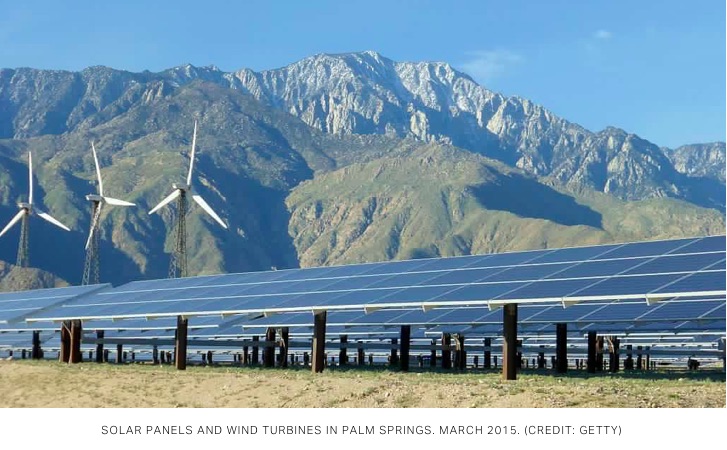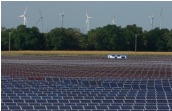By 2030, wind and solar will “undercut existing coal and gas almost everywhere.”

A new study reveals just how stunningly rapid the clean energy transition is.
Bloomberg New Energy Finance (BNEF) reported on Tuesday that renewables are now the cheapest form of new electricity generation across two thirds of the world — cheaper than both new coal and new natural gas power.
Yet just five years ago, renewables were the cheapest source of new power in only 1% of the world, explains Bloomberg NEF in its New Energy Outlook 2019. Note 1.
Equally remarkable, BNEF projects that by 2030, wind and solar will “undercut existing coal and gas almost everywhere.”
In other words, within a decade it will be cheaper to build and operate new renewable power plants than it will be to just keep operating existing fossil fuel plants — even in the United States.

New analysis of solar and wind should put the natural gas industry on notice: Renewables to capture two-thirds of the $10 trillion the world will invest in new generation through 2040. Note 2.
The reason for this transformation is the remarkable drop in both solar and wind power prices this decade: Since 2010, wind power has dropped 49% in cost and solar plummeted 85%.
BNEF projects prices will continue to fall for the next decade and beyond, with the cost of solar panels and wind power dropping by another third by 2030. Overall, by 2050, the cost of solar electricity is expected to drop 63% compared to today, and the cost of wind will likely drop 48%.
Because of these ongoing price drops, the world is projected to invest a whopping $4.2 trillion in solar power generation in the next three decades. The result is that solar will jump from a mere 2% of global power generation today to a remarkable 22% in 2050.
Over the same three decades, global investment in wind power will likely hit $5.3 trillion, and wind is expected to rise from 5% of global electricity today to 26% in 2050.
The result is that we are shifting from a world today where two thirds of power generation is from fossil fuels to one three decades from now where two thirds is zero carbon. As BNEF puts it, we are “ending the era of fossil fuel dominance in the power sector.”
Note 1. Bloomberg NEF, New Energy Outlook 2019. bit.ly/2rkdRUn
Note 2. Joe Romm, “New analysis of solar and wind should put the natural gas industry on notice,” Think Progress (15 Nov 2018). bit.ly/31PAeU9
Commentary was originally published in Think Progress (18 June 2019). bit.ly/2WWxqGh
Joseph Romm, Ph.D., is one of the United States’ most influential communicators on climate science and solutions. Romm is Chief Science Advisor for “Years of Living Dangerously,” which won the 2014 Emmy Award for Outstanding Nonfiction Series. He is the founding editor of Climate Progress, which New York Times columnist Tom Friedman called “the indispensable blog.” In 2009, Time named him one of its “Heroes of the Environment,” calling him “The Web’s most influential climate-change blogger.” In 2009, Rolling Stone put Romm on its list of 100 “people who are reinventing America.” Romm was acting assistant secretary of energy in 1997, where he oversaw $1 billion in low-carbon technology development and deployment. He is a Senior Fellow at American Progress and holds a Ph.D. in physics from MIT.
Dr. Romm is also author of Climate Change: What Everyone Needs to Know (Oxford University Press, 2015). amzn.to/2J8L1iG
“Climate Change, What Everyone Needs to Know is a must-read for those who want to become climate literate and join the growing conversation about the greatest threat humanity faces today.” –The Guardian


No comments yet, add your own below